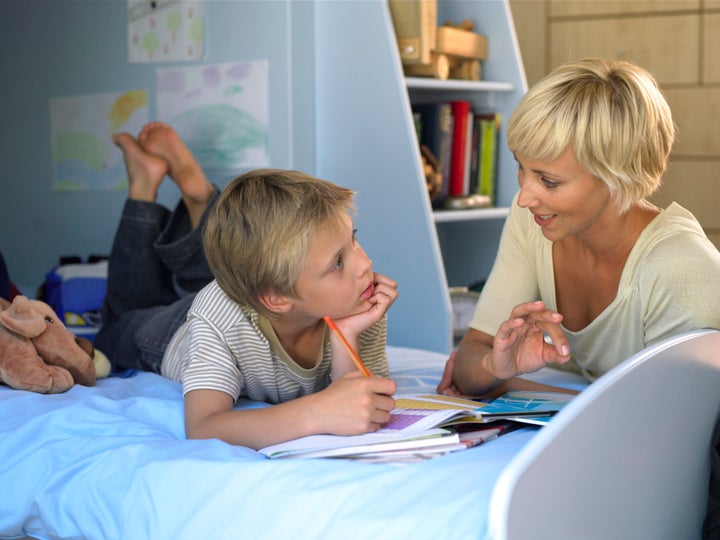Where did the summer go? Suddenly everyone’s back to school, and it’s time to knuckle down to school runs, homework and study again. Learning doesn’t stop when the kids get home from school, though.
“Children need a pleasant, stimulating, organised environment to consolidate one day’s learning and prepare for the next,” attests teacher Lizzie Jones, so here are her tips for making your home a great learning environment.

Provide a tidy, quiet place to study
“Children learn best in an environment that’s well-organised and uncluttered,” says Lizzie, so declutter the summer’s accumulated mess and create a neat area - a desk in a bedroom or a communal table in a quieter room. Emphasise the importance of tidying up once they have finished - children who have their own desks should keep them neat so that they can easily find pens, pencils, rubbers and calculators next time, and children who share a table could tidy all their equipment into a nearby drawer or tray.
Natural light is best for studying, so make sure desks or tables are near windows, and use daylight bulbs during the winter. Make sure other family members respect homework time and keep noise levels down.
Develop a reading culture
Research shows that children who grow up in homes with books receive, in effect, three years more schooling than those from book-less homes, regardless of parental education, occupation or social group. So, read to your children, encourage them to read independently, and make sure they see you reading too. Creating a home library needn’t be expensive. Lizzie says, “Pick up second hand children’s classics in charity shops, car boot sales and school fairs. And encourage your children to make use of their school library and your local library too.”
Give kids space to be creative and messy
Children learn by doing, so make sure they have access to pens, paint, glue, Plasticine, clay, crafts and dressing-up clothes. If you can, Lizzie advises, “designate a ‘creative corner’ where your children can express themselves: give them a say in its design and showcase their artistic efforts on the walls and shelves so they can be proud of what they have made” and encourage creative hobbies such as model-building, science kits and playing musical instruments as an antidote to the inevitable screen-time most children indulge in.

Engage with the natural world
Whether you live in the inner city or deep in the countryside, there’s always a way to engage with nature. Pets are a great daily way of learning about other creatures and developing a sense of responsibility, whether you have two dogs, a cat and a rabbit, or some stick insects in a vivarium. Your children can grow herbs, tomatoes and beans equally well in a patch of garden or on a sunny balcony. And don’t miss out on the night sky – there are some great smartphone apps you can point at the stars to identify planets and constellations and even track the International Space Station travelling overhead.
Be museum-savvy
It’s great to have family days out but, let’s be honest, trying to see and make sense of everything in, say, The British Museum or National Museum of Scotland in just one day is bewildering and can be boring for kids. Instead, give museum trips context and focus. If your children are studying the Romans, just go to the Roman section, then head off for an ice cream. Many museums do special exhibitions, so if your children are interested in the topic, go just to that exhibition. Museums then become treasure troves of learning rather than mind-numbing rows of static artefacts.
Don’t mix tech and homework
Constantly checking apps, social media and playing online games breaks a child’s concentration when they are supposed to be learning. Distracted studying is low-quality learning, so insist on a tech amnesty during homework hours.
Spend time with your children
“Really,” says Lizzie, “the best way of creating a great home learning environment is to spend time doing stuff with your children.” It doesn’t have to be scheduled activities – they can help you cook, use grown-up tools under your supervision to help you fix things or simply go for a walk with you. The secret is to turn as many everyday life experiences as you can into learning opportunities. Don’t feel every moment has to be filled, though – children benefit from ‘boredom time’, and it’s good for them to initiate their own activities.
A great learning environment at home helps your children become independent thinkers and doers. Lizzie often quotes American advice columnist Ann Landers: “It is not what you do for your children, but what you have taught them to do for themselves that will make them successful human beings,” she suggests.
And that is sound counsel.